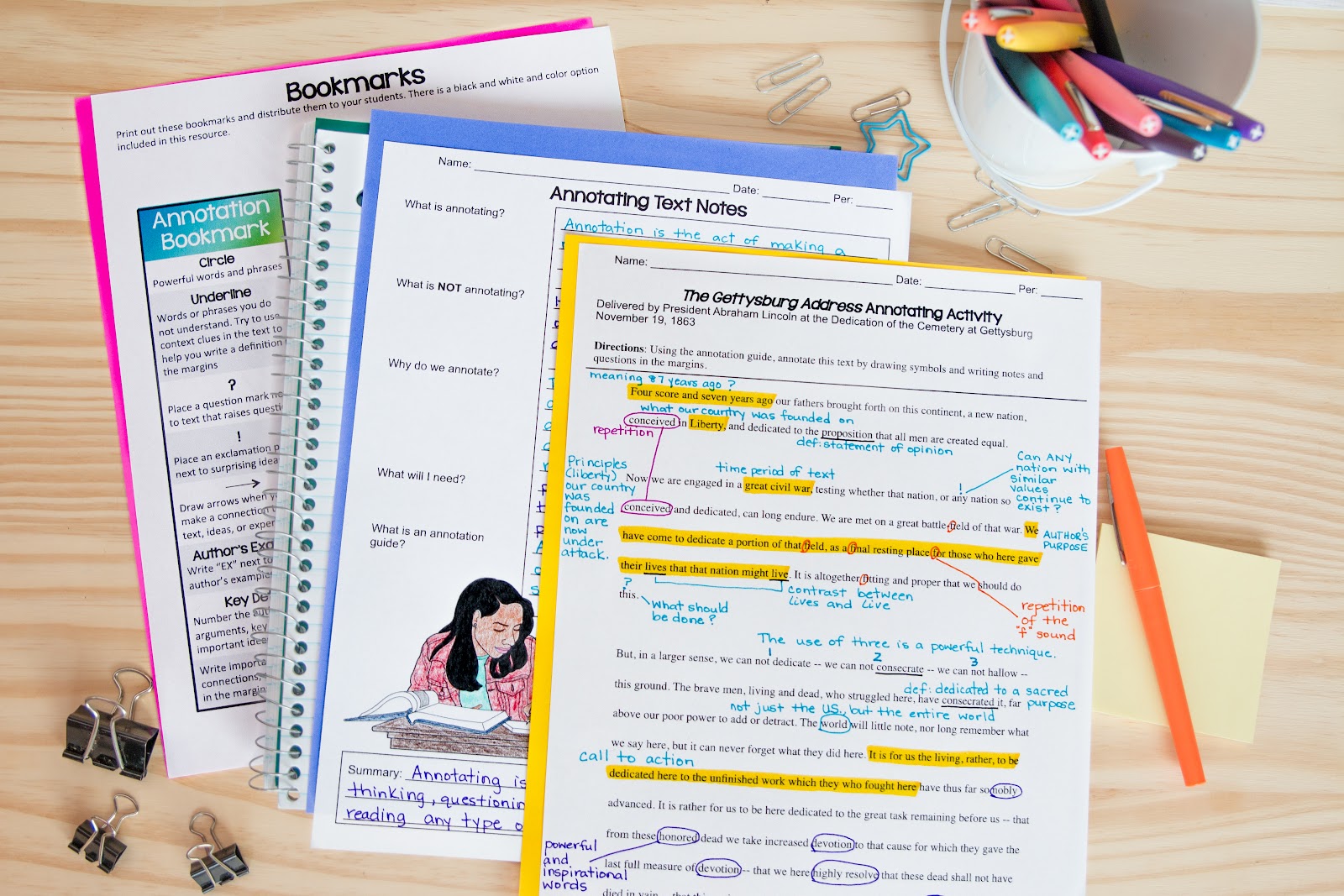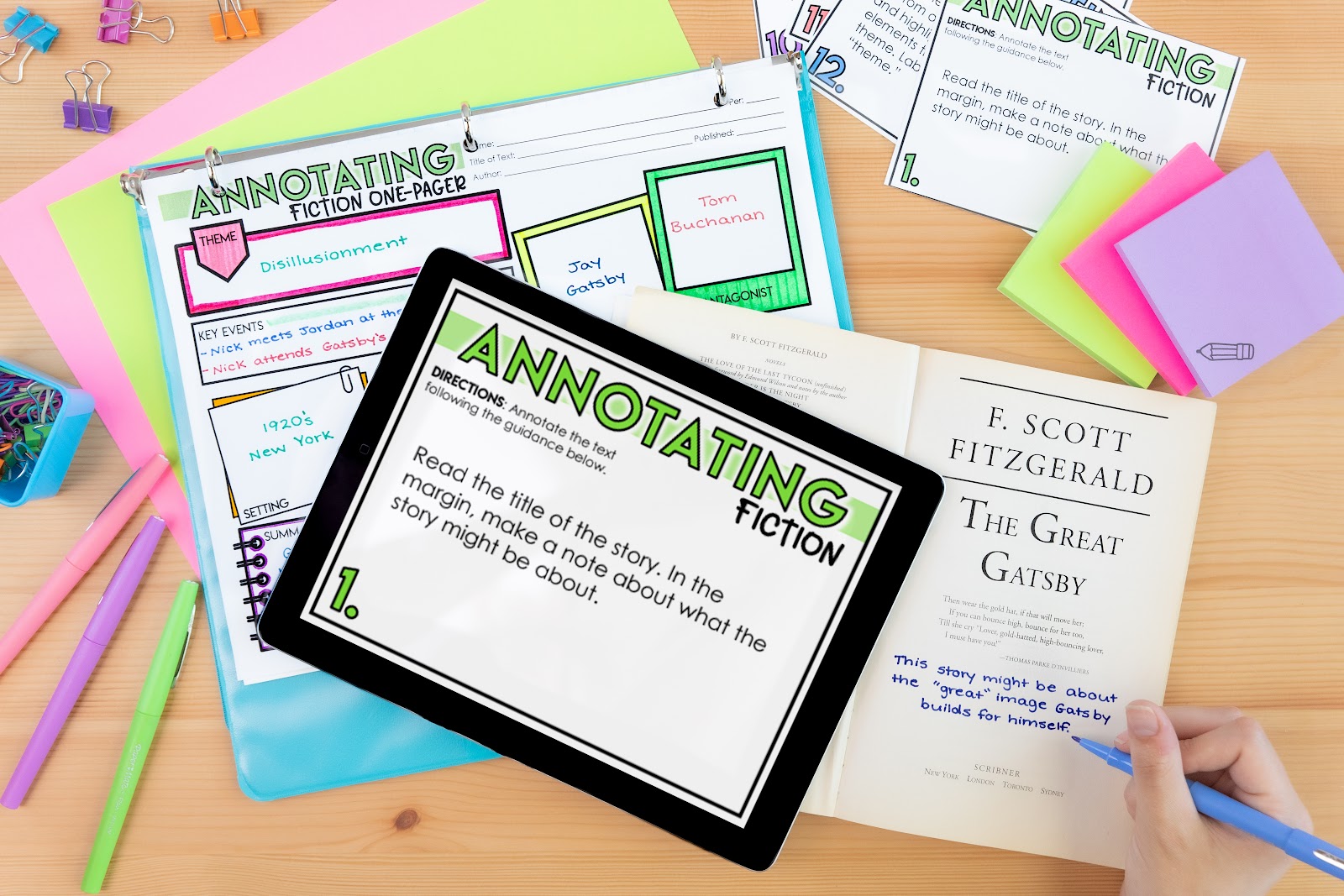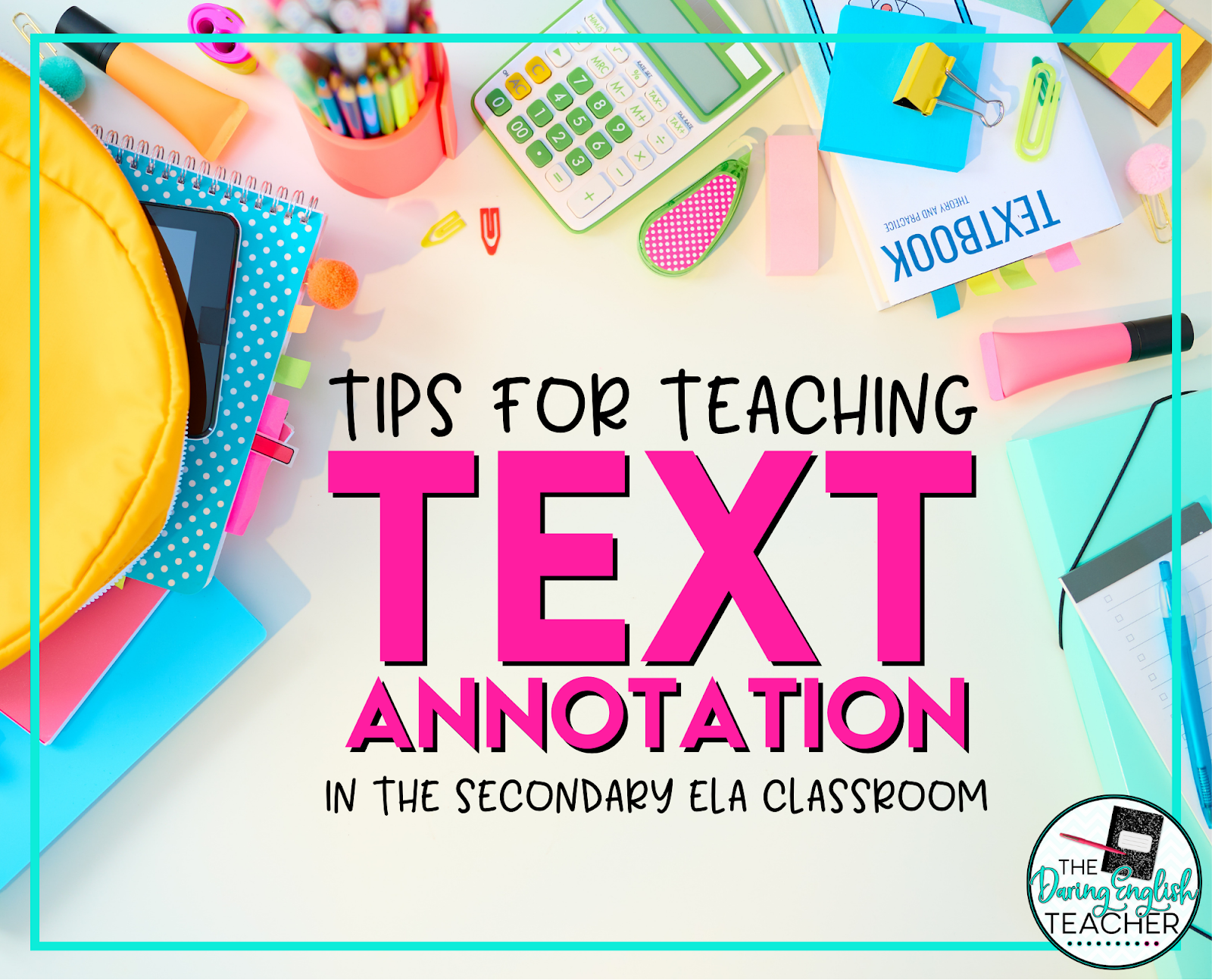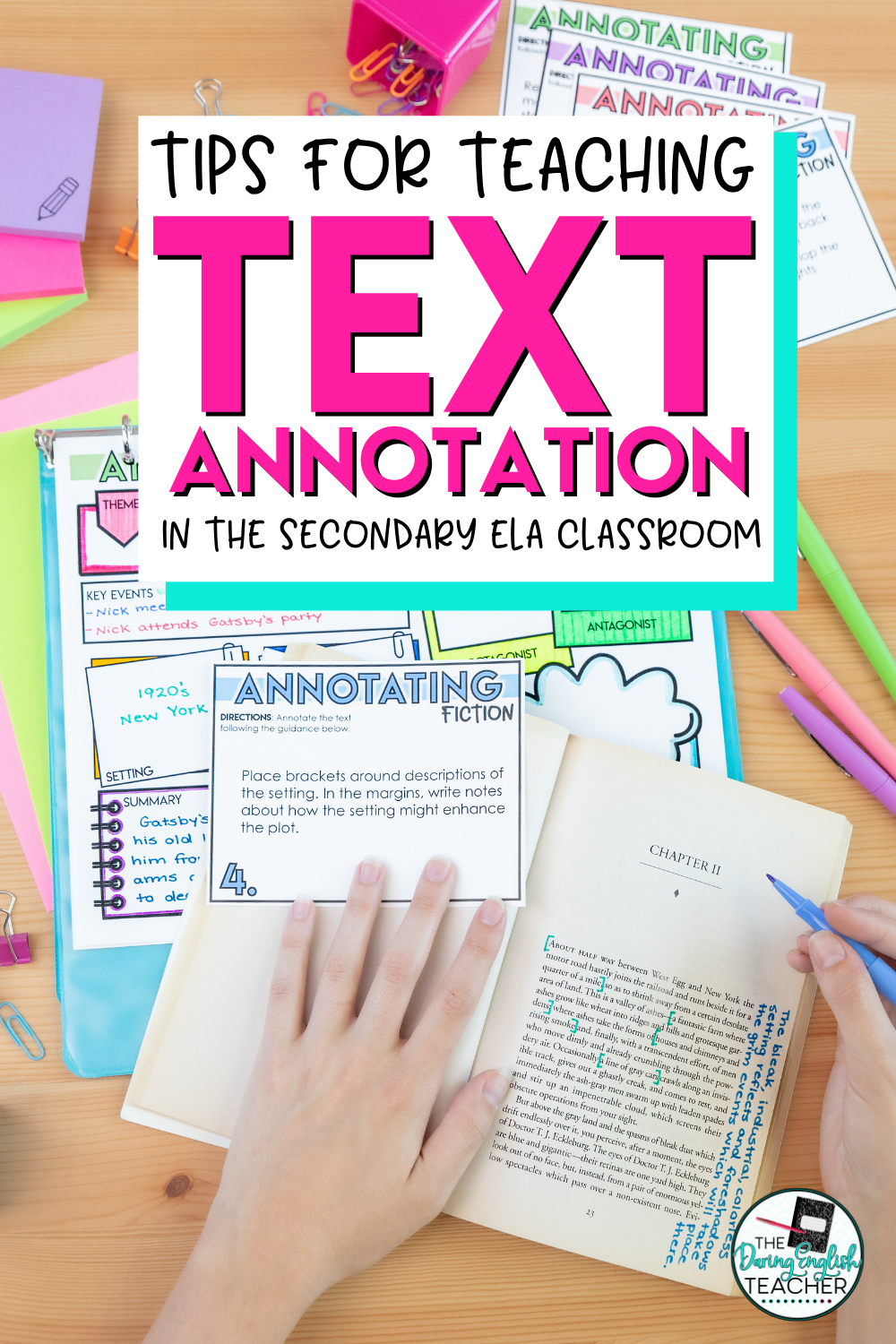If I could choose one skill that every one of my students achieves by the time they leave my classroom, it would be how to have a personal conversation with every piece of literature they read. That’s why I focus so much on teaching text annotation to my classes. It’s an essential close reading strategy that provides innumerable benefits to a young person’s life (both in school and out).
As educators, you and I both know that annotating a text is more than simply circling random words and underlining what may or may not be topic sentences. Annotation helps students track their thinking as they read in order to reflect on the evolution of their understanding. When applied effectively, the practice of annotation encourages rich interactions between reader and text.
As with all things worth doing, teaching text annotation to your students requires a differentiated approach, consistent practice, and follow-through. You’ll always have a few “squeaky wheels” who insist there’s no point in marking up everything they read. Stay strong, my friends. We know the value of this close reading skill, which is why I’m giving you several practical strategies for teaching text annotation in your own classroom.
Strategies for Teaching Text Annotation
Model Annotation Strategies
As with any new concept that I introduce to my students, I always model meaningful annotation before I have students practice independently. We start with guided instruction with the use of my Annotating Text Made Easy unit. I work through the guided instruction as students take notes, and then I show them my thought process as I go through a chunk of text -annotating just small pieces of text with my students as I display my work on the projector. This could be from a short section of a class novel, short story, poem, or even small sections of a high-interest YA novel off your bookshelf.
 |
| Annotating Text Made Easy |
Use Mentor Texts
Another way to practice annotation is with shorter, well-known mentor texts that students can mark up in a class period and discuss with a partner or small group. Here, it would be helpful to provide your students with a reference guide, so you’re not being flagged down every five seconds to explain what it means to underline a word as opposed to circling it. I always recommend throwing up a digital copy of the annotation handout on your school’s learning platform so your students will always be able to access it.
Annotation Task Cards
Task cards are another great way to check for understanding and encourage independent practice because annotation task cards still provide students with guidance, but they have some choice for their annotations. These annotation task cards work well as informal assessments after students go through their mentor text with partners or the whole class. If you’re into the low-prep thing or if you like being able to use the same resource again and again with different texts, I have annotation task cards for fiction, nonfiction, and poetry texts that you can just print, cut out, and have ready to go. For longevity, I recommend laminating these cards to use year after year.
 |
| annotation task cards |
Keep it Short and Have a Purpose
One of the most valuable lessons I’ve learned about either teaching students to annotate or assigning text annotations in class is to keep the passage relatively short and have a purpose. For example, when I annotate poetry with my students, we do it because I want the students to identify and explain various poetic elements, but then also be able to demonstrate those same elements in their own writing. By annotating the poems beforehand, students have a clear example of what to use in their own writing.
Practice Annotating Digital Texts
If your school has a 1:1 Chromebook or tablet program, I highly encourage you to have your students practice annotating PDF texts. In today’s hyper-digital world, it’s likely they already have digital textbooks, read novels on their phones and tablets, and spend many of their waking hours on a smart device. Not only does digital annotation help young people increase their digital literacy skills, but it also prompts them to think more critically about the information they’re absorbing online.
With annotating digitally, I like to teach my students several key strategies like using color-coded highlights and comments in Google Docs to mark up a text. You can also use Kami to digitally annotate documents with your students as well.
Teaching text annotation is an invaluable skill that students will take with them far beyond the boundary of your classroom. With regular practice, they’ll soon develop this essential close reading strategy and (hopefully) interact more authentically with any texts they read. If you’d like to see more annotation resources, check out my Annotation Made Easy bundle on TPT!
For more reading about teaching text annotation, you might want to read this blog post about why I teach text annotation the first week of school or this blog post about simple steps to help teach text annotation.




One Comment
I taught annotating for years through many complaints and epiphanys.
I am glad you have done this.
I would love to publish something myself.